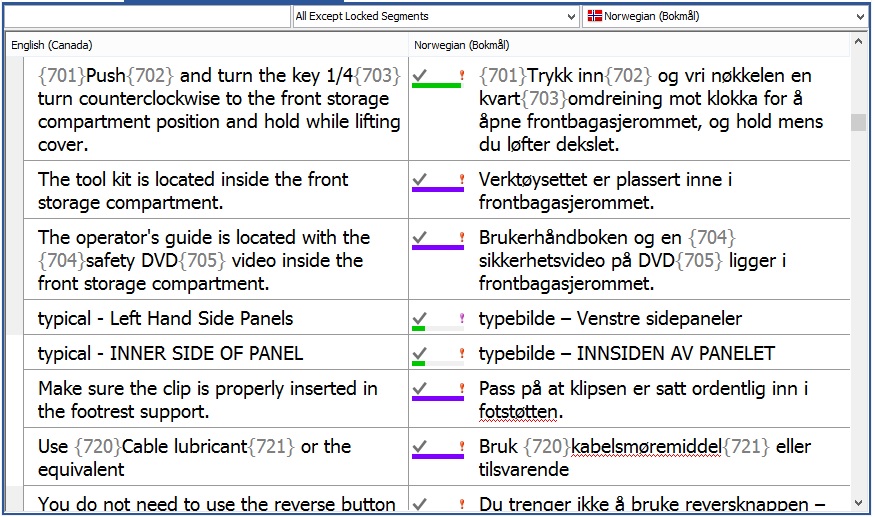Localization is an essential component of any successful international expansion in today’s globalized business environment.
Adapting a product or service to a particular region or country’s language, culture, and other requirements is known as localization. In addition to translating content, it may involve adapting marketing campaigns and complying with local regulations, among other things.
After all, statistics show that search traffic can increase by 47 percent, website visits by 70 percent, and conversion rates by 20 percent with localization.
- 1. Content Should Be Clear and Concise
- 2. Keep Your Voice Unique
- 3. Unless the Content Is New, Avoid Starting From Scratch
- 4. Your Content Should Be Contextualized
- 5. Access to Software and Reference Materials
- 6. Create a Glossary of Terms and a Style Guide
- 7. Software Can Speed Up the Localization Process
- 8. Proofread Your Content
- 9. Make Sure You Test Frequently and Early
- 10. Always Put Localization First When Writing Content
- Global Audiences Don’t Have To Be Difficult To Reach
Download this post by entering your email below
Here are 10 localization best practices that businesses should follow:
1. Content Should Be Clear and Concise
Your source content ought to be simple and clear so that translators have an easier time translating it. If something does not need to be said, then leave it out.
Keep your language simple and stick to the point.
Defining and using product-specific terminology, as well as spelling out acronyms, will allow translators to identify the meaning of a sentence more easily.
Use articles before nouns to avoid ambiguity. Translated versions may accentuate or repeat any mistakes in the source content.
2. Keep Your Voice Unique
It might seem counterproductive to remove your individual tone of voice when writing clearly and concisely.
However, for localization and translation purposes, translators should begin with a clear, global and internationalized English version of the text.
Humor, idioms and casual language should be avoided in order to make your content global-ready.
It is undoubtedly difficult to translate humor. Many jokes only apply to certain regions with similar values and cultures. Like a wet sparkler, efforts to take a joke overseas will most likely fizzle out.
To localize your content as quickly and easily as possible, keep humor to a minimum or remove it entirely.
3. Unless the Content Is New, Avoid Starting From Scratch
In addition to reducing costs, reusing previously translated content ensures consistency across all translated materials.
Consistency is essential in maintaining a brand image and conveying the intended message to the target audience. Reusing translated content also saves time, because translators don’t have to start from scratch with every new project.
Instead, they can focus on translating new content and spend less time on repetitive phrases or sentences.
Thanks to translation memory tools, reusing translated content has become even more efficient and accurate, making it a popular method among businesses.
4. Your Content Should Be Contextualized
Context is everything when it comes to translating and localizing.
In a context-free environment, how can translators determine if the single word “Contact” refers to a button or a label? A variety of methods can be used to provide context.
Write notes for translators and supply alternate phrases directly in the source code to provide further context.
5. Access to Software and Reference Materials
Help your translators visualize how the localized content will be used. Translators should be able to access the software or product being developed.
In the event that you cannot give translators access to your in-development software due to organizational or technical obstacles, you can supply other reference materials, such as wireframes, mockups, screenshots or screencasts.
6. Create a Glossary of Terms and a Style Guide
When working on the same project, writers must follow certain rules.
Style guides are established in most companies. In case you don’t use the Oxford comma or spell a specific term in a consistent way, make sure your writers have a copy of your style guide.
Compiling a glossary of relevant terms with clear definitions is an excellent idea, too. For example, you could define words commonly used in the legal or medical industry.
7. Software Can Speed Up the Localization Process
To reduce costs and ensure quality, use the latest translation technology.
Translators do not repeatedly translate the same phrases but reuse approved translations instead. Even with the latest tools, translation management can be tedious.
A localization solution will streamline and speed up your product development process. Additionally, the administrative overhead will be reduced, and translation quality will improve.

8. Proofread Your Content
It is impossible to overstate the importance of proofreading. For your content to be localized into other languages, it must be 100 percent accurate.
No matter how diligent and professional your copywriters are, it is always helpful to have another pair of eyes look over the text in order to catch potential mistakes.
9. Make Sure You Test Frequently and Early
The majority of companies ignore translation and localization management until it is too late.
Issues with source content can be reproduced or exacerbated in different languages.
Test your translations early and often, and you won’t have to deal with dozens of bugs that you hadn’t even considered.
10. Always Put Localization First When Writing Content
For a future-proof localization workflow, find native copywriters and content creators who can add appropriate flavor to your writing.
For example, your English source text should be simplified rather than colorful or colloquial if you want your content to be easily localized. Likewise, content creators should aim for simple, concise and clear language that can be easily understood by a global audience.
Finally, consider outsourcing localization for the very best results. Writing with localization in mind from the outset can save time and resources in the long run.
Global Audiences Don’t Have To Be Difficult To Reach
Your next localization project will be highly effective if you follow these best practice tips. Localization is essential for success in today’s globalized business environment.
By following these 10 best practices, companies can effectively localize their products and services to meet the specific requirements of each market.
If you’re looking to maximize your content production, our team at WriterAccess can help. You can claim a 14-day WriterAccess trial to get the feel of it right here.








